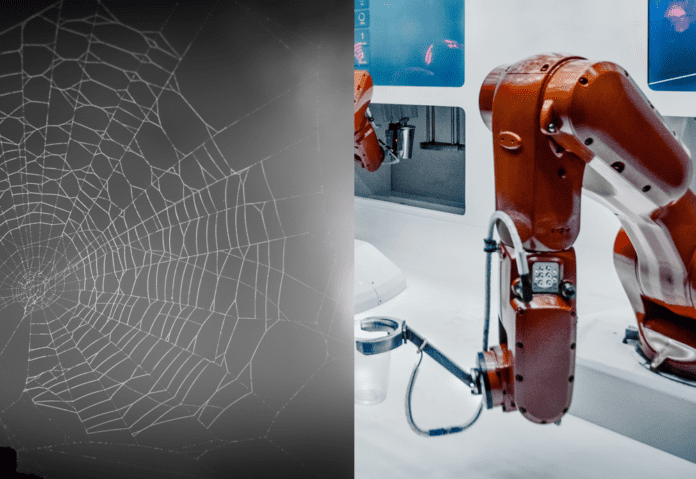This post is also available in:
 עברית (Hebrew)
עברית (Hebrew)
Researchers at the University of Tartu in Estonia have developed a revolutionary robot capable of “spinning” its own physical components in real-time, a concept inspired by the silk-spinning abilities of spiders. This groundbreaking technology uses a heated polymer to form complex structures on-site, opening up new possibilities for robots to build and adapt their components instantly, depending on the task at hand.
Traditional robots typically rely on pre-built, rigid components designed for specific functions. While highly effective, this approach limits flexibility and versatility. In contrast, the new robot can extrude a special polymer in liquid form, which quickly cools and solidifies into strong, flexible fibers. This polymer is extruded through a heated nozzle, enabling the robot to create tailored structures in the immediate environment without requiring pre-made parts.
According to TechXplore, In various tests, the robot has demonstrated its ability to “spin” fibers across hazardous areas, such as simulated disaster zones filled with debris like glass shards and bird feathers. The robot can create a custom-made bridge strong enough to support the weight of a toy car, showcasing its capacity to adapt to real-world challenges. Additionally, the robot has successfully constructed delicate tools, such as a soft gripping limb that can handle fragile objects, like flowers, without causing any damage.
One of the robot’s most impressive capabilities is its ability to anchor itself to various surfaces, even those that are difficult for traditional adhesives, such as Teflon or waxy leaves. This attachment is achieved through mechanical entanglement and natural adhesion properties, similar to how spiderwebs work in nature.
The implications of this innovation are vast, particularly in areas like disaster relief and construction. Robots like this could quickly navigate hazardous environments, building temporary pathways or structures, improving the efficiency of search-and-rescue operations. Furthermore, this technology could lead to more sustainable, adaptive infrastructure by allowing robots to dynamically create structures on-site, reducing the need for pre-manufactured components.
The team’s research was published in the journal npj Robotics.


























